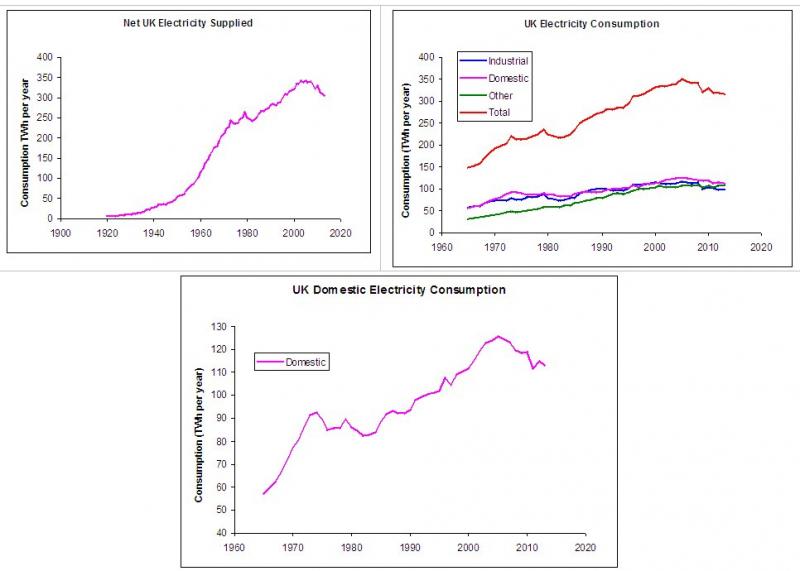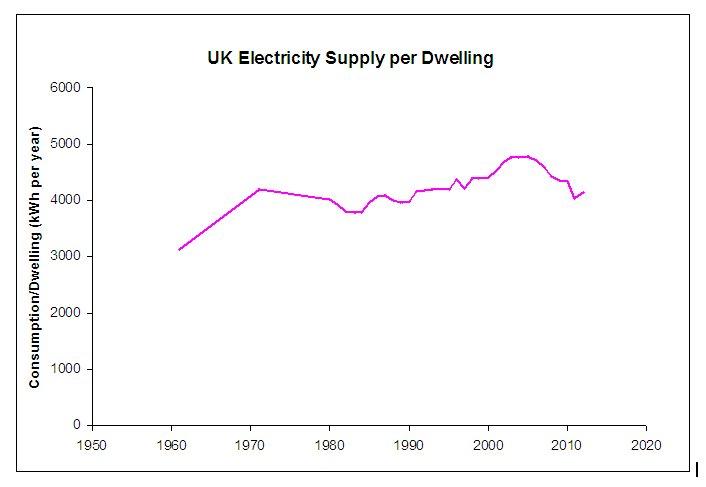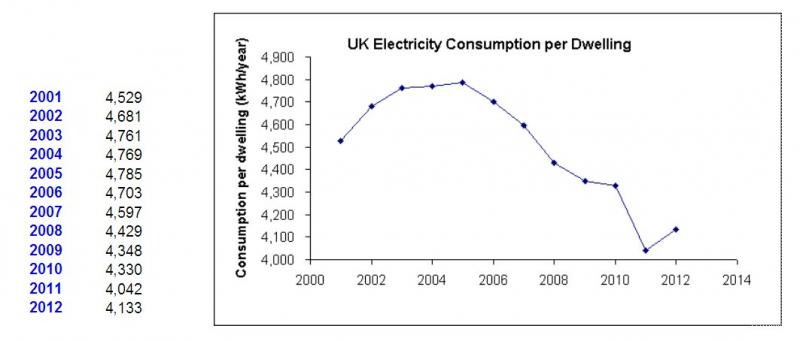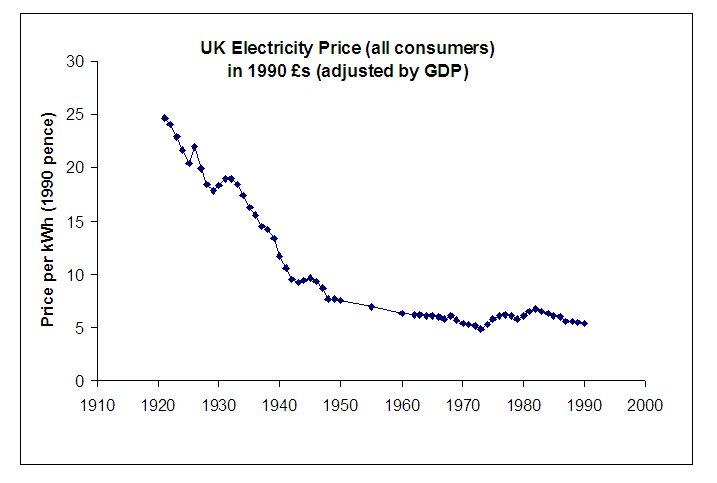The number of dwelling in Great Britain increased from 7.7 million start of 20th century to 26.2 million in 2008. It would seem new permanent dwellings over last 20 years peaked in 2006/7 at 219,000.
The near straight line graph shows 1951 at 15 million and 2008 at 25 million so if you compare eclectic power used per dwelling rather than per person then the amount of electric power used per dwelling has gone down.
Between 1901 and 2008 the number of dwellings in England increased over three and a half times,
from nearly 6.3 million to around 22.4 million. The rate of increase was smaller in the other UK
countries. In Wales the number of dwellings increased three times from 433,000 to 1.3 million,
while in Scotland the number of dwellings more than doubled from 986,000 to 2.5 million over the
same period. In Northern Ireland the number of dwellings doubled from 354,000 in 1951 (the
earliest data available) to 737,000 in 2008 (DCLG 2010b).
We are really trying to compare a modern house 1954 with same house 2014 and in 1951 there were many old houses still using gas for lights even when they did have electric power often only 2 fifteen amp sockets for whole of house. I was not looking at those houses I was looking at a house with the new 13A sockets my father tells me his 1954 house had 5 x 13A sockets one in every room except kitchen where his father-in-laws house just before the war had just 2 sockets.
So only looking at houses built after the second world war. There was no need for a fire in the kitchen as the range cooker was never let out but living room and sitting room would only have fires lit when wanted all day electric fires were used when heating only needed for a few hours.
So although today microwave, kettle, oven, hob all use high power these don't run for that long compared with the electric fires used before gas central heating was fitted.
Maybe the area was a little unusual as the steel works sold off the small sized coke to it's workers cheap so central heating was not installed until around 1975.
My first house 1975 has hot air gas central heating but the next one 1979 had just one gas fire in living room we had to fit central heating after we bought it new. So 1980 still building houses without central heating.
By 1990 one would not consider building a house without central heating so post war houses likely had a reduction in electric power used on the ring final until around 1990 when it would have steadily raised again. Remember I am not including power used by the white meter for storage radiators only that used from the ring.
Today we can split 13A plugged equipment in to groups.
1) Under 3A which will include most of the items.
2) Around the 6A mark that is the microwave, toaster.
3) Short time 10 -13A that's kettle, oven, dishwasher.
4) Long time 13A that's immersion heater tumble drier.
5) Over 13A Shower, Cooker.
The grey import of 16A ovens from Europe is the odd one out and it's hard to decide if should be put with group 3 or 4 as although over 13A it uses power for such a short time it would be unlikely to blow a 13A fuse or cause an overload for long enough to worry.
What we need is a 16A FCU so oven can be put on same supply as hob without needing heavy cable but never seen one.
I missed out washing machine as the washer/drier would drop in to group 4 but without drier into group 3.





